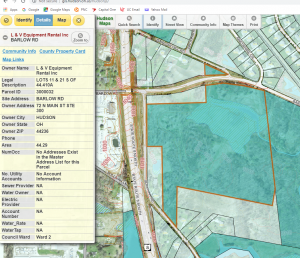Environmental
RFI_001: The objective of the 2019 OVSC Environmental Competition states that small scale treatment system should reduce the concentration of phosphorus, however phosphorous is not listed in the possible qualities or judging criteria. Could you please explain if phosphorus will be measured as part of the competition? If so, how phosphorous will be tested (by what analytical method) and how will it be scored during the competition?
A. The concentration for the phosphorus fluctuates throughout the year so what will happen is once we collect the raw water that you will be treating in the spring, we will measure its phosphorus concentration using a colorimeter. After you go through your treatment process, we will test the concentration of the phosphorus in your treated water and see if you were able to decrease it. When it comes to scoring I believe we will just see which group was able to bring the concentration of phosphorus down the most. I will have to get back to you on the possible points this will count towards because I will just need to contact the adviser for this side competition.
RFI_002:
2) We are curious if alkalinity and turbidity will be judged because they appear in one section but not the other. Please see the updated rules on the conference website for the answer of this question. We are only judging pH, phosphorous, turbidity, alkalinity. We apologize for overlooking this.
3) Also, there is a minor difference between measuring iron concentration and total iron. Iron will no longer be measured.
4) Further more, we want to request that an annual average range for phosphorus be given, seeing how all the other parameters were included in the chart. Please see data attachment under the Competition Rules.
5) Many of the rows in the chart do not have units, although it can be implied, we would like all units for all parameters clarified, to avoid any confusion. Please see updated rules with units now added.
6) Finally, how will the alkalinity be measured at the competition? (i.e. via titration or some other method?) Alkalinity will be measured through either acid titration or by total alkalinity by hack (TNT 870). This will be determined by the equipment available to us.
Site Civil
RFI_001:
- When I download the DWG file it seems to have nothing in it other than a broken reference [N2245565]. Maybe it is just me having trouble viewing the file? I am using AutoCAD Civil 3D 2018
- Was it your intent for us to strictly follow the thick red line drawn on the image of page 5/5 of the rules as our site limits or can we use the whole parcel in this area? See images for clarification
- After viewing the interactive maps for the City of Hudson I discovered that a sizable portion of the site is a wetland. See picture for clarification. Since the state of Ohio does not generally allow grading within a wetland and building requires somewhat extensive permitting & cost, was it your intent for us to work around this area? If so, entrance to the site would only be possible to access from the east off of State Route 8 North or from the south off of Sullivan Rd since the wetland blocks entrance from the north off of Barlow Rd. Which brings me back to question 2 above that asks about the project limits. The red thick line would not allow entrance from the east or south, but using the whole parcel in this area would allow this.

A.
- The DWG file has been updated to contain the existing contours (elevated polylines) for the area to be developed. In addition to this, a downloadable .tif file that contains an aerial image of the proposed lot to be developed has been uploaded to the OVSC website. Should the teams choose to use the aerial image, it will need to be saved to the same location as the DWG existing conditions file on the computer you are using.
- The entire parcel may be used to design the development.
- Teams may assume that the developer in the City of Hudson is purchasing both the large main parcel for the project and the smaller, semi-rectangular parcel located southeast of the intersection of Barlow Road and Sullivan Road. Additionally, it is advisable for all team members to avoid designing within the wetland for the reasons you listed. With the acquisition of this second parcel, it is the developer’s hope to still have the main access point for the new development off of Barlow Road.
Balsa Wood Bridge
Where exactly is the loading plane? Figure 1 shows an arrow pointing to the “top” of the bridge as the loading plane. But the directions say it shall lie 30mm to 40mm about the support surface.
In what direction does the plate need to be free to move? Does it have to move along the entire length of the bridge (L) or along the entire width (W)?
When you say the “Loading Plate” needs to slide along the entire loading plane, do you mean JUST the plate, or the entire mechanism with the rod attached?
The loading plane is anywhere between 30 to 40 mm from the base of the bridge. Figure one assumes a top-loading bridge but anyone may construct a bridge with a superstructure within the given dimensions. The loading plane again must still be 30-40 mm from the base of the bridge and allow a square plate of dimensions 40mm by 40mm by 12mm thick to pass through the entire length of the bridge freely. A 3/8 inch bolt is secured to the plate from below the bridge and so each of the listed loading points must allow the bolt to come up through the center of the bridge to attach to the plate. Only the plate itself must have clearance along the entire length of the bridge (L).